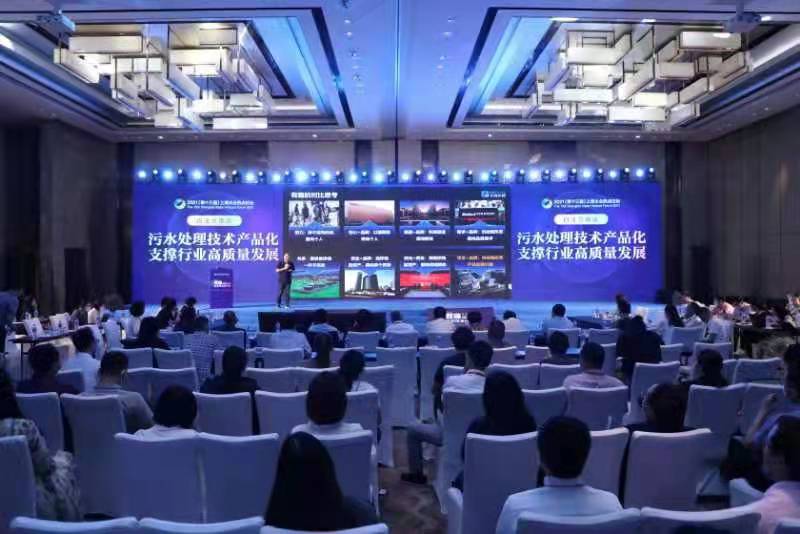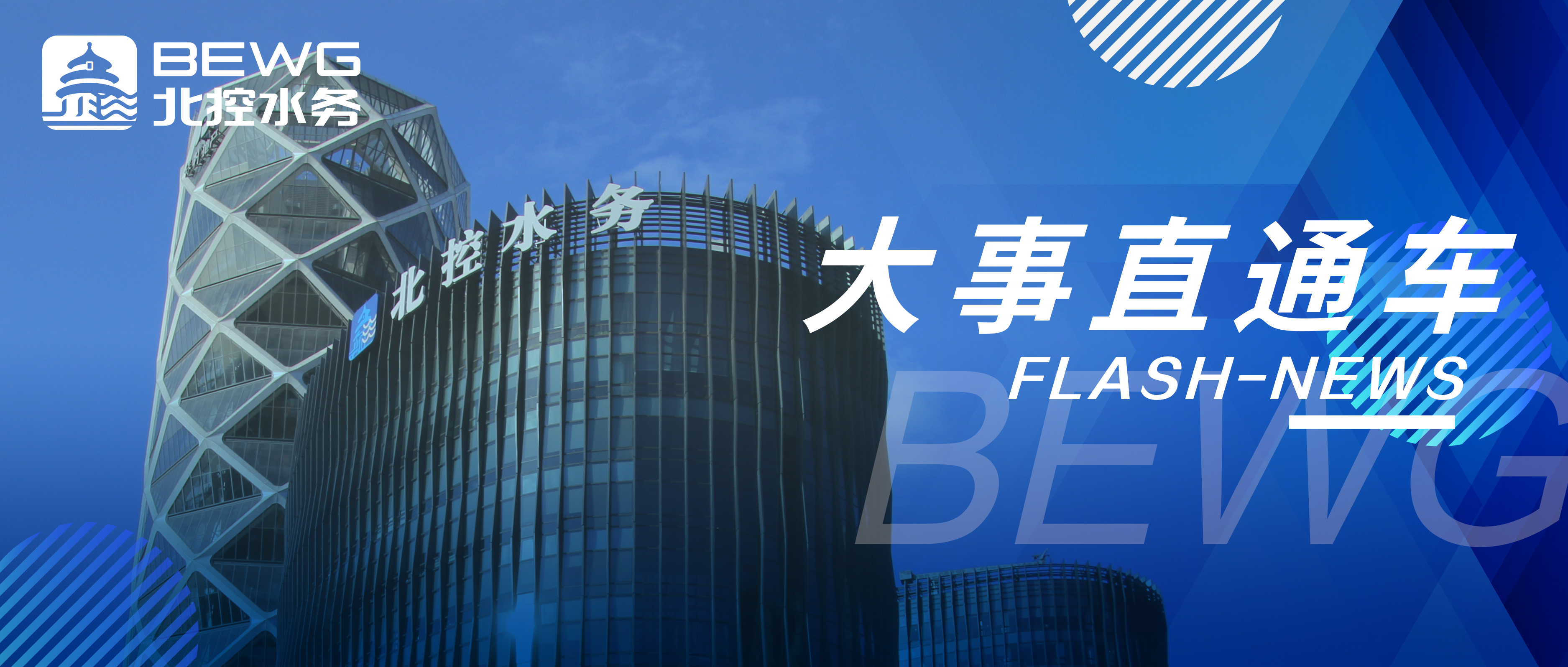Beikong Water was selected as one of the first carbon monitoring and assessment pilot projects of the Ministry of Ecology and Environment 2021-09-24
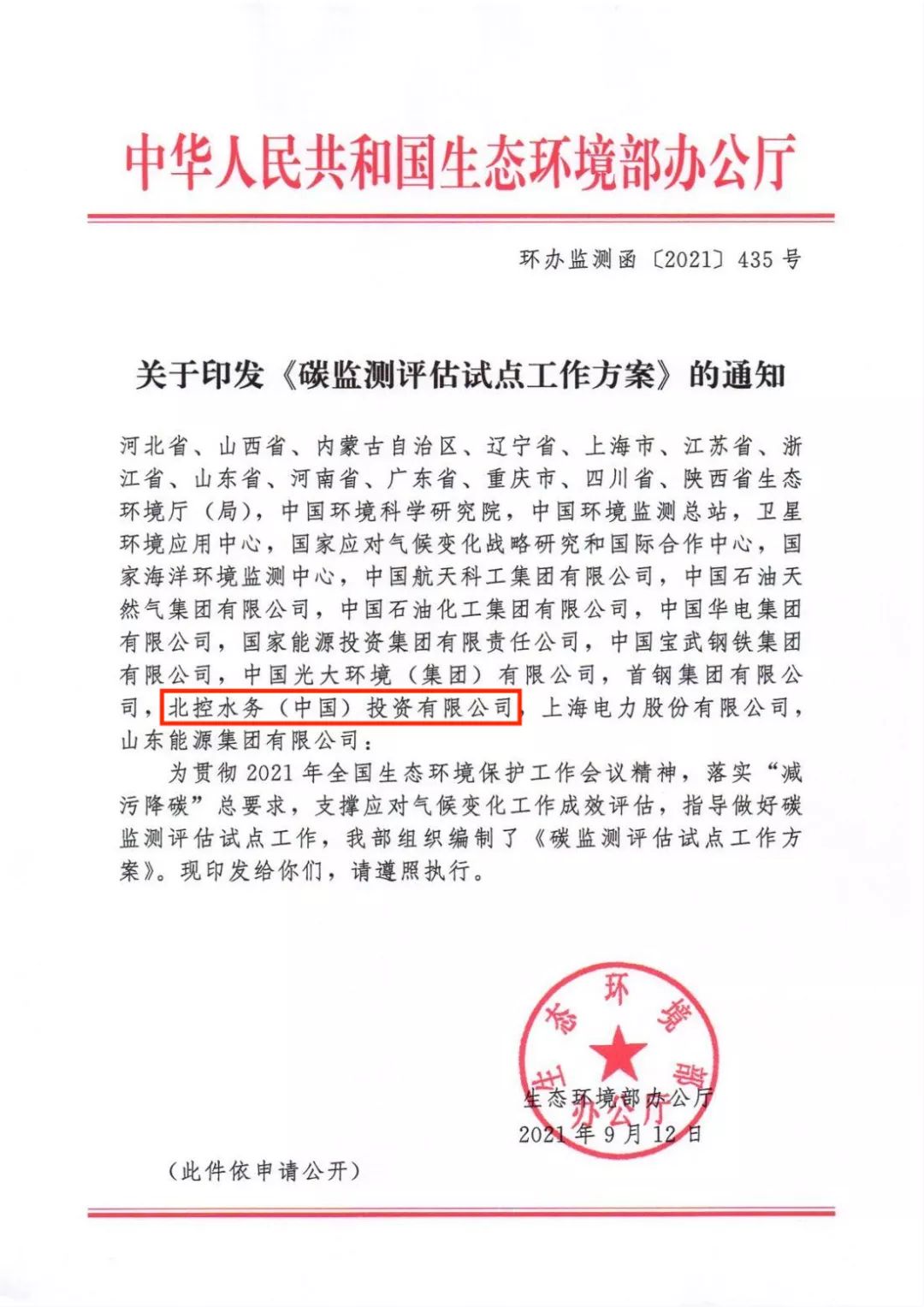
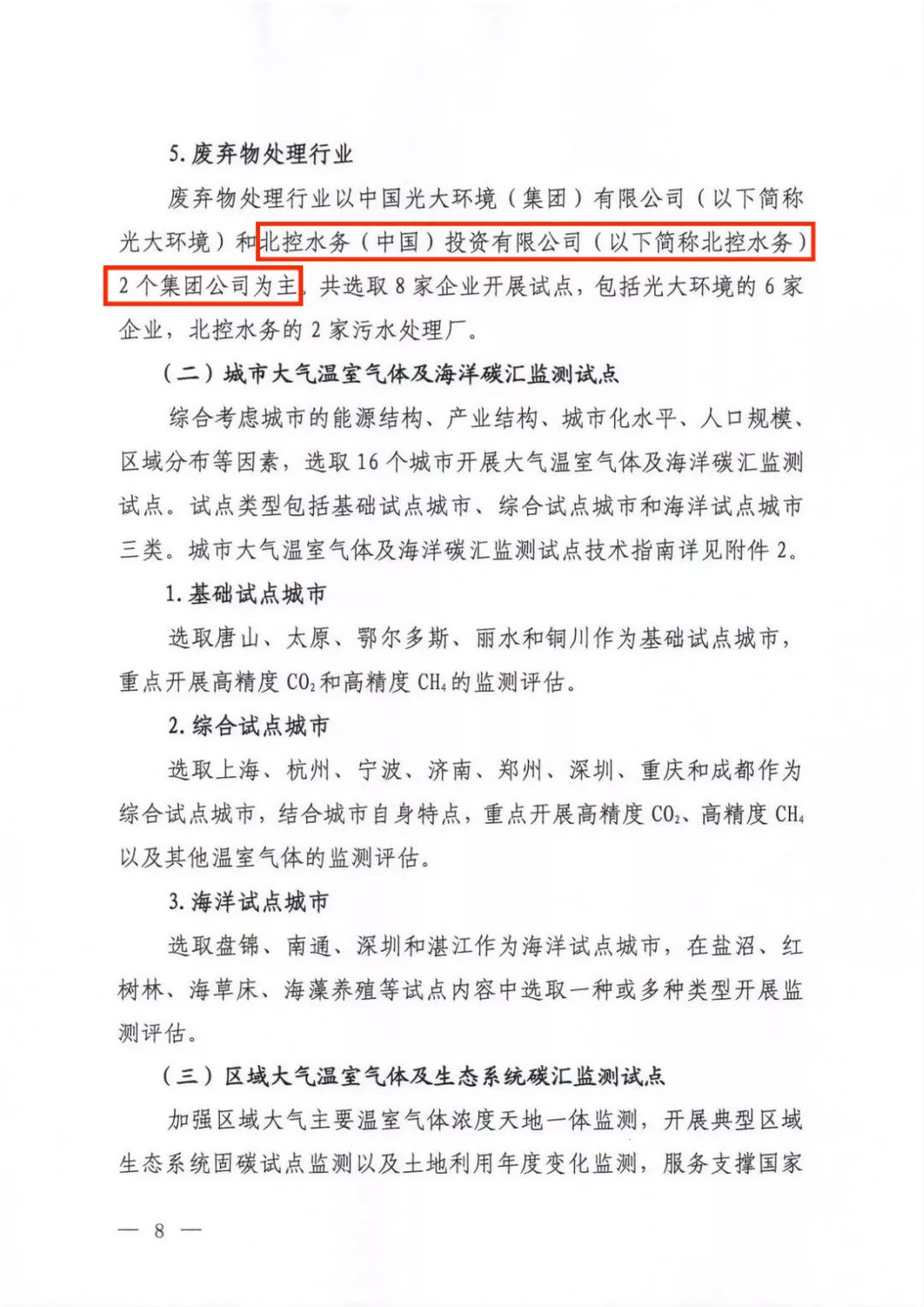
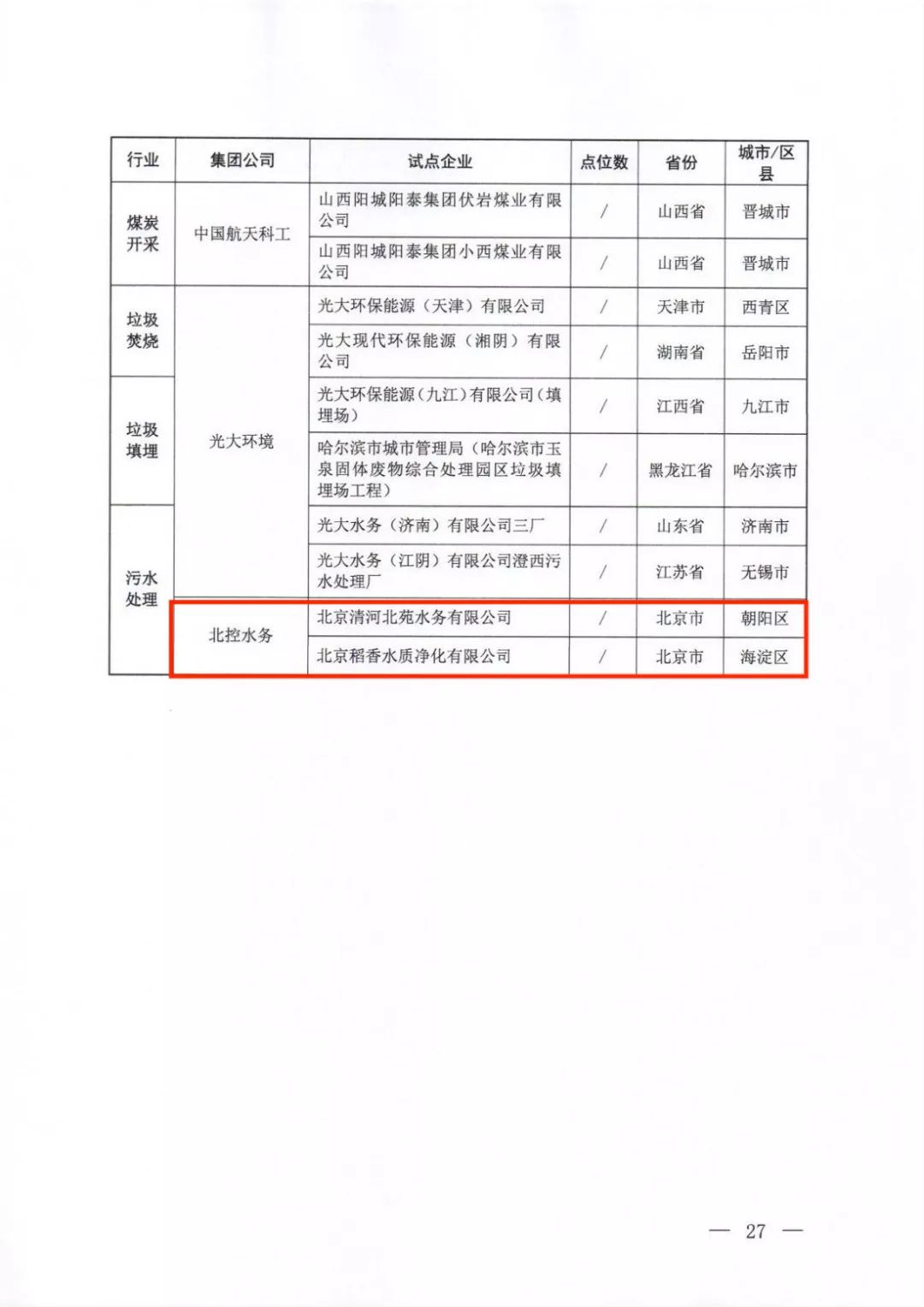
In order to achieve the goal of carbon peaking and the vision of carbon neutrality, the China Carbon Emission Trade Exchange was officially launched in July this year, and at the same time, China's carbon monitoring was also accelerating. According to work arrangement of the Ministry of Ecology and Environment, China National Environmental Monitoring Center has established a carbon monitoring working group, which takes the lead in carrying out systematic carbon monitoring research, scheme design and pilot work in China.
A few days ago, the Ministry of Ecology and Environment issued the Pilot Work Plan for Carbon Monitoring and Evaluation, focusing on regions, cities and key industries, and carrying out pilot carbon monitoring and evaluation, aims to explore the establishment of a technical method system for carbon monitoring and evaluation by 2022 and give play to demonstration effects. The first batch of national greenhouse gas emission monitoring pilots cover five key industries: thermal power, steel, oil and gas exploitation, coal exploitation and waste treatment. Beijing Qinghe Beiyuan Water Co., Ltd. and Beijing Daoxiang Water Purification Co., Ltd. under BEWG were selected into the pilot list of carbon monitoring and evaluation in the waste treatment industry.
Greenhouse gas emission monitoring of the waste treatment industry includes CH4 and N2O emissions from the waste landfill and sewage treatment, and CO2, CH4 and N2O emissions from the waste incineration. Beijing Qinghe Beiyuan Water Co., Ltd. and Beijing Daoxiang Water Purification Co., Ltd., included in the pilot projects, which are an above-ground sewage treatment plant and an underground sewage treatment plant respectively, can fully ensure the universality and applicability of greenhouse gas emission monitoring and scientifically and effectively help China's carbon monitoring work.
Adhering to the spirit of scientific development, after earnest study and careful verification in recent years, BEWG has advocated the concept of "scientific carbon reduction, systematic methods, proper measures, and conducting pilot projects before launching", and has carried out various practices and exploratory studies on carbon emission reduction.
In order to formulate a carbon reduction action plan more scientifically, BEWG has established a special working team and a research group, provided with financial support, and devoted itself to studying scientific carbon emission accounting methods that are in line with international standards, by benchmarking international standards and referring to more than 30 national and ministerial standards and guidelines and nearly 100 domestic and foreign documents, on the basis of IPCC2006 and IPCC2019 United Nations Technical Guideline. At the same time, based on the actual operation data of more than 100 BEWG water plants, the practice of carbon emission reduction and monitoring was carried out, which consolidated the technical reserve for the carbon emission reduction and carbon monitoring work of the Group and even the water industry.
On the path of promoting carbon emission reduction, BEWG has accumulated a series of low-carbon processes such as sludge double circulation-AOA deep nitrogen and phosphorus removal technology and aerobic granular sludge, forming low-carbon products in many fields such as sludge, wetland and village sewage. At the same time, water source heat pumps and photovoltaic power generation technology are applied in many projects, sludge cooperative incineration mode is adopted according to the characteristics of different regions, and carbon reduction practice actions are carried out through refined management measures such as BE-EMR intelligent control and "1+N" group intelligent management mode. Luoyang Chandong Sewage Treatment Project was successfully selected in the first batch of low-carbon operation cases of urban sewage treatment.
In the future, BEWG will actively respond to the new requirements of carbon peaking and carbon neutralization for the water monitoring, give full play to its supporting and serving roles in reducing pollution and carbon synergy, boost the construction of China's carbon monitoring and evaluation system, and make positive contributions to building a beautiful China and building a community of harmony between humanity and nature.
Carbon monitoring refers to the process of obtaining carbon source and sink conditions and its change trend information such as greenhouse gas emission intensity, environmental concentration, ecosystem carbon sink and its impact on ecosystem by means of comprehensive observation, numerical simulation and statistical analysis, so as to serve the research and management of climate change. The main monitoring objects are seven controlled greenhouse gases emitted by human activities regulated by Doha Amendment to the Kyoto Protocol, including carbon dioxide (CO2), methane (CH4), nitrous oxide (N2O), hydrofluorocarbons (HFCs), perfluorocarbons (PFCs), sulfur hexafluoride (SF6) and nitrogen trifluoride (NF3).
